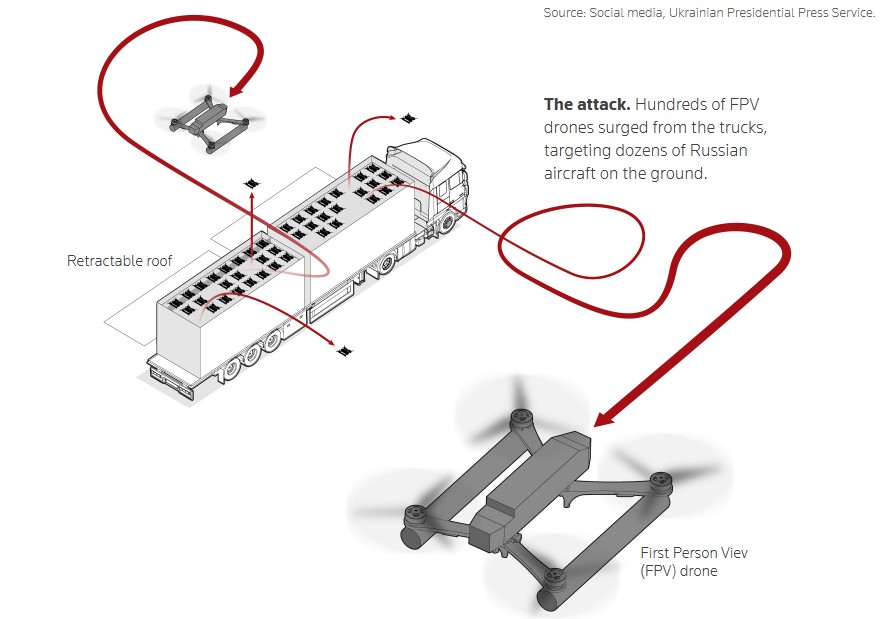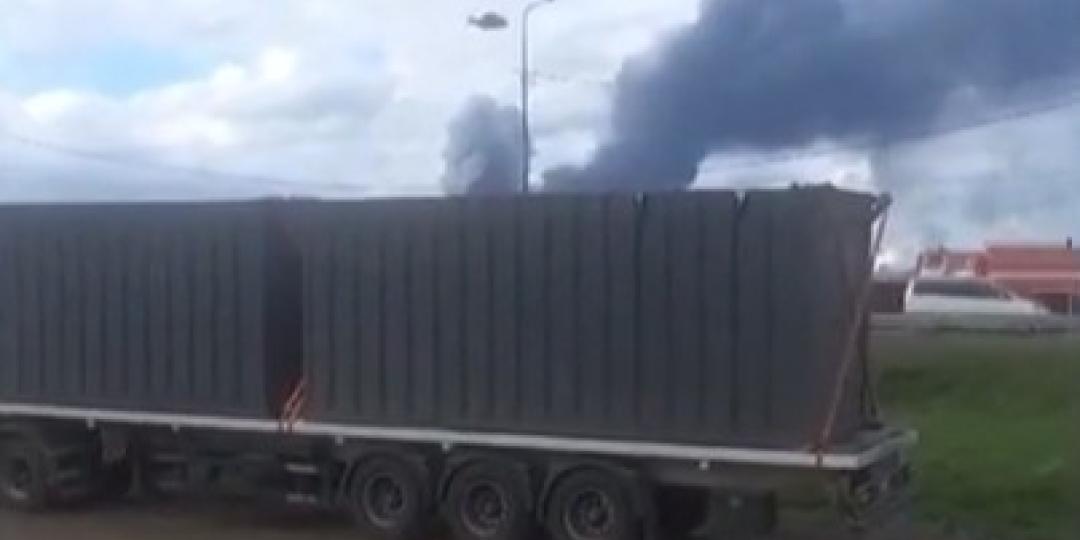In the most audacious exercise of asymmetrical warfare, details have emerged of how Ukraine used road freight, wooden crates appearing like ordinary cargo, and drones launched from parked trucks, to launch an attack deep inside Russian territory.
There has been significant commentary since the covert operation, and the freight industry in Europe and northern Asia is steeling itself for supply chain fall-out and insurance repercussions in the wake of ‘Operation Spiderweb’.
Seen as a substantial escalation of asymmetrical attack strategies against Russia, Ukraine's Security Service (SBU) meticulously planned and executed the operation over an 18-month period.
It entailed the covert transportation of more than 100 small, explosive-laden first person view (FPV) quadcopters – referred to as ‘Osa’ drones – into Russia.
The drones were hidden in wooden containers designed to resemble ordinary mobile cabins, which were routinely transported on flatbed trucks without tarpaulins.
Unwitting drivers delivered these containers to locations near key Russian airbases, believing they were transporting building materials. Once in position, the containers served as launch platforms for the FPVs.
On 1 June, Ukraine launched 117 of these drones from within Russian territory, targeting four strategic airbases in Belaya, Olenya, Dyagilevo and Ivanovo.
Belaya was the furthest of the four bases, situated in the Siberian region of Irkutsk, around 4 850 km from the Ukrainian capital of Kyiv.
Reuters reported that Ukraine’s main offensive threat in the war so far had been its long-range drones, which had struck targets deep inside Russia, including oil refineries, military bases and arms depots.
“Yet, despite some technological advances and increased production, the drones have a maximum range well short of 5 000 km and can be detected as they fly into Russian air space, meaning air defences down many of them.
“The element of surprise was vital, denying Russia’s military the time to move mobile air defences into place or block the drones with electronic jamming.”
The attack resulted in the destruction or severe damage of 41 Russian aircraft, including Tu-95 and Tu-22 bombers, as well as A-50 surveillance aircraft.
According to various international news sources, this accounted for approximately one-third of Russia's strategic bomber fleet and inflicted an estimated US$7 billion in damages.
Satellite imagery confirmed the extent of the destruction, despite Russian efforts to conceal the damage by removing debris and employing decoy tactics.
Ukrainian President Volodymyr Zelenskyy praised the mission as a uniquely executed operation, highlighting its success in demonstrating Ukraine's advanced capabilities and strategic planning.
The operation has been compared to daring raids from World War II, underscoring its significance in modern warfare.
In response to the attack, Russia launched retaliatory drone strikes on Ukrainian cities, resulting in civilian casualties. These developments have heightened tensions and raised concerns about the potential for further escalation in the conflict.
The success of Operation Spiderweb has sparked discussions among military analysts about the evolving nature of warfare, particularly the effectiveness of low-cost, high-impact tactics. Experts warn that such strategies could be employed by other nations or groups, emphasising the need for countries to adapt their defence strategies accordingly.














